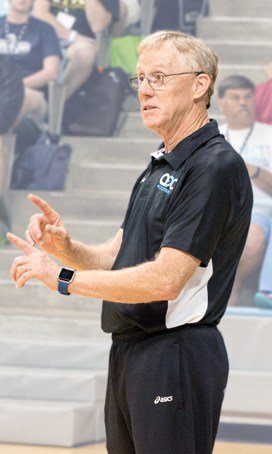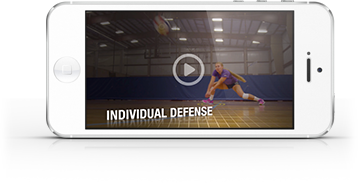

Dianne DeNecochea | Former Pro Beach Player, College Volleyball Recruiting Advisor
For many volleyball players and parents, the college volleyball recruiting process seems like a mystical thing out there in the universe that’s untouchable and unknown.
I often get asked these questions:
- “What is the recruiting process?”
- “How does it work?”
- “When should a player start the recruiting process?”
It’s important to understand the answers to these questions, so here they are:
First, the college volleyball recruiting process is just that – a “process.” It includes steps that players and coaches take to move from initial communication to a verbal commitment. During a player’s senior year, signing a National Letter of Intent or accepting an invitation or admittance into the school solidifies their roster spot.
Second, the recruiting process works through steps that make up the process as a whole. To make these steps clearer for you, I have outlined them below based on my experience as the parent of a D1 college player and as a recruiting advisor.
Third, it’s best to start the process as a freshman or sophomore … at the latest. This sets you up for a smoother, less stressful journey to a verbal commitment, which you’ll make as a junior or early in your senior year.
Here are the 10 steps the player should take during the recruiting process:
Step 1 | Target list
Create your college volleyball target list (20-40 schools).
Step 2 | Highlight video
Create your highlight video (2-3 minutes).
Step 3 | Intro emails
Send intro emails to your target list. (Include your highlight video link and ask this question: “Do you need my position in (your grad year)?”)
Step 4 | Response or no-response
Depends on response or no-response from each school. From this point on, each school on your target list is in its own mini-recruiting process within the process, meaning schools move through the recruiting process on their timeline depending on their response or non-response to your Intro Email. (I know, it sounds confusing, but it’s true!).
- Step 4-A: If a school responds: “No. Done recruiting your class, don’t need your position in your grad year, going in another direction, etc.,” then move it to what I call your Secondary List.
- Step 4-B: If a school responds “Yes, we need your position and we like your video, etc.,” respond within 24 hours and move to Step 5!
- Step 4-C (non-response): If the coaches from a school do not answer your email, send a check-in email every 2 weeks. After getting no response 5 times (arbitrary number I like), move the school to your Secondary List. The coach may later respond apologetically with a “Yes,” so then you can go to Step 5.
Step 5 | Phone call
Work to set up a phone call with the college coach. (Provide days and times when you are available.)
Step 6 | Live play*
They watch you play live at a tournament. (During a dead period this means on live video or on unedited video provided by you.)
Step 7 | Assessment and communication continues
Assessment and communication continues. (You have to be proactive and keep this going.)
- Step 7-A: Send emails thanking coaches for phone calls. Set up phone calls to get feedback after they watch you play live or virtually. Ask where you are on their list/interest level. Ask about their timing for making a decision and if they have another offer out. If it’s all good, go to Step 8.
- Step 7-B: Tactfully, find out the offer on the table (walk-on, full or partial scholarship, etc.). If this works for your family, go to Step 8.
- Step 7-C: At this point, if they take another player or decide to go in another direction, move to the Secondary List. Note: Always send thank you emails for their time and wish them the best.
Step 8 | Unofficial campus visit*
Work to set up an unofficial campus visit. Meet the coaches and players, watch practice, visit the weight room, tour the campus, etc. During a Dead Period, this can be a formal “virtual meeting” with coaches, staff, you and your parents. You and your parents can also drive around the campus and town.
Step 9 | Communication continues with strong interest*
Communication continues with strong interest between you and the coaches.
- Step 9-A*: Talk to the players virtually, by phone or message through Instagram during a Dead Period. Ask questions and get to know them like “Why do they like playing volleyball for this program? What do they like about the school?”.
- Step 9-B: Assess the status and what needs to happen for you to receive an offer. For example, they may need to watch you play live after Dead Period ends or see if you get into the school.
- Step 9-C: Complete the tasks or steps in Step 9-B as soon as possible.
Step 10 | Offer to be a student athlete*
Offer to be a student athlete at their school. This comes after the coach verbally (over the phone during a Dead Period) offers you a roster spot and possibly some type of scholarship (whatever was on the table in Step 7-B) and you accept the offer and verbally commit to play volleyball and attend this school.
In addition to these 10 steps of the recruiting process, I have created a Recruiting Checklist during COVID-19 that is downloadable in PDF form with tips and extra things to consider. Take a look!
I hope this article helps you better understand the steps of college volleyball recruiting process. I’m happy to help with information, advice and actionable steps to fulfill your dream of playing volleyball in college!
*These steps are affected by “Dead Periods” (when college coaches cannot have face-to-face interaction with players or parents and cannot watch players compete in person), and I share ways to work through this and alternatives within these steps. There have been several “Dead Period” extensions due to COVID-19.
Dianne DeNecochea played indoor volleyball at the University of Tennessee and was inducted into the school’s Hall of Fame in 2007. She was a top pro beach player from 1999 to 2013. Since her retirement as a player, she has formed a company, ProActive Volley, that helps young players with the college recruiting process. She also coaches club volleyball in the 12's and 14's age groups in San Diego.



